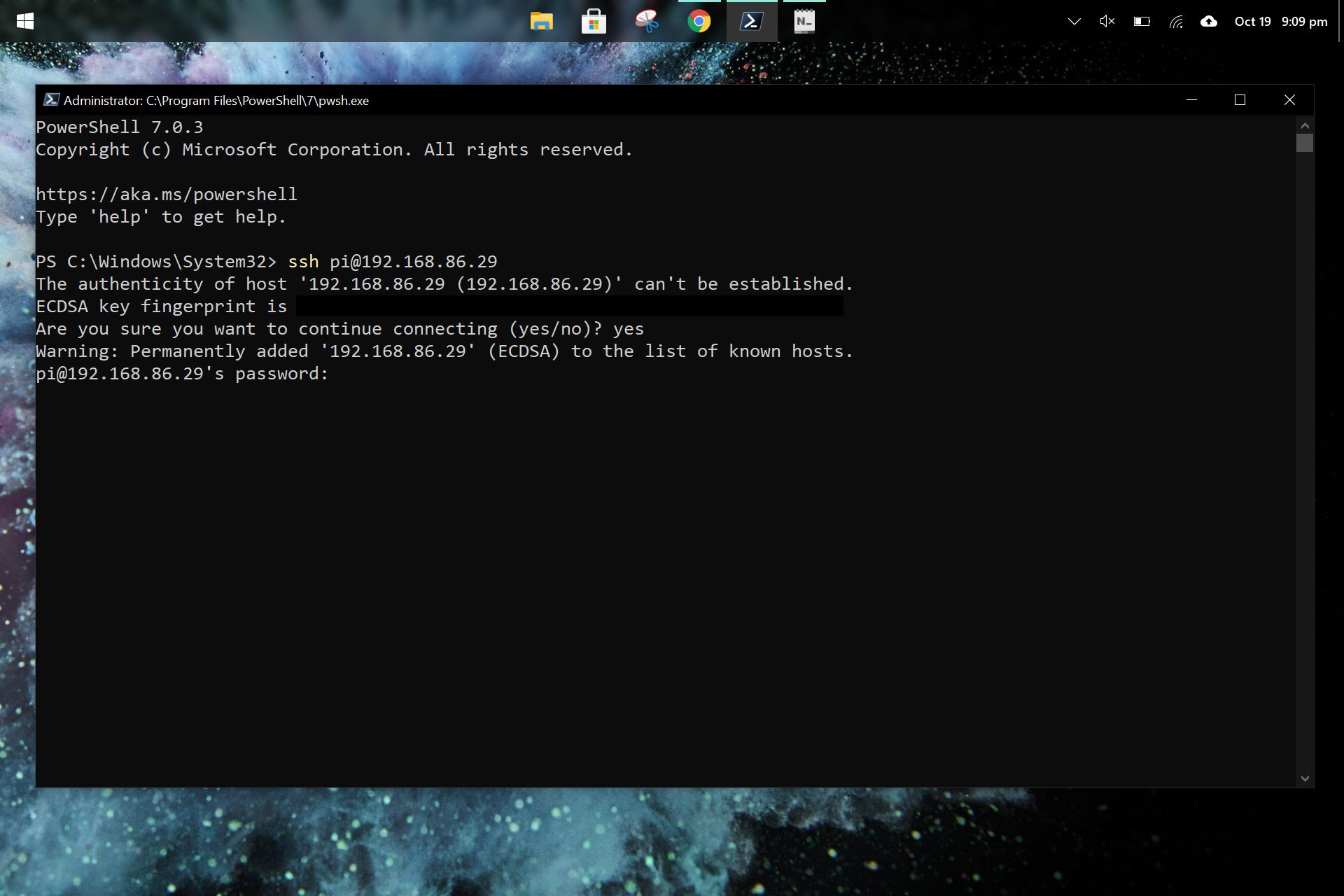RemoteIoT VPC SSH Raspberry Pi download free has become one of the most searched topics among tech enthusiasts and professionals alike. As more people explore remote access solutions, understanding how to set up a secure Virtual Private Cloud (VPC) using Raspberry Pi for SSH access is crucial. Whether you're a beginner or an advanced user, this guide will walk you through everything you need to know. So, buckle up and let's dive in!
Nowadays, the idea of controlling devices remotely without being physically present sounds like magic. But with tools like RemoteIoT, VPC, SSH, and Raspberry Pi, it’s more like science than sorcery. If you’re someone who wants to streamline their workflow or just love tinkering with gadgets, this setup is perfect for you.
Before we jump into the nitty-gritty details, let me clarify something: setting up a VPC for SSH on your Raspberry Pi isn’t as complicated as it sounds. Sure, there’s some technical jargon involved, but I promise it’s manageable. By the end of this article, you’ll have all the knowledge you need to get started.
- Malayalam Cinema A Deep Dive Into Pachamanga And The Evolution Of The Industry
- Unraveling The World Of Vegamovies A Convenient Risk Or A Copyright Crisis
What is RemoteIoT and Why Should You Care?
Let’s start with the basics. RemoteIoT refers to a system that allows you to control Internet of Things (IoT) devices from anywhere in the world. Think about it: you can monitor your home security cameras, adjust smart thermostats, or even manage industrial equipment—all from your phone or laptop. Sounds cool, right?
The beauty of RemoteIoT lies in its flexibility. You don’t need expensive hardware or complex configurations. A Raspberry Pi, combined with a VPC and SSH, can do wonders. Plus, since it’s open-source, you can download everything for free, saving both time and money.
Key Features of RemoteIoT
Here’s a quick rundown of what makes RemoteIoT so appealing:
- Unpacking The Digital Revolution Onlyfans Creators And The Evolution Of Content Sharing
- Bollyflix Bengali A Haven For Bengali Film Enthusiasts
- Cost-Effective: No need to invest in pricey hardware or software.
- Scalable: Whether you’re managing one device or a hundred, RemoteIoT grows with you.
- Secure: With SSH encryption, your data stays safe from prying eyes.
- Versatile: Works with a wide range of IoT devices and platforms.
And the best part? It’s completely customizable. You can tweak the setup to fit your specific needs, making it ideal for hobbyists, entrepreneurs, and businesses alike.
Understanding VPC and Its Role in RemoteIoT
A Virtual Private Cloud (VPC) acts as a secure network where you can host your IoT devices. It’s like building a private fortress for your data, shielding it from unauthorized access. When combined with SSH, a VPC ensures that only authorized users can connect to your Raspberry Pi.
Setting up a VPC might sound intimidating, but trust me, it’s not. Most cloud providers offer user-friendly interfaces that make the process a breeze. Plus, there are tons of free resources available online to help you along the way.
Steps to Create a VPC for Your Raspberry Pi
Ready to set up your own VPC? Follow these simple steps:
- Choose a cloud provider that offers free tier services, such as AWS or Google Cloud.
- Create a new VPC and configure its settings according to your requirements.
- Assign a public IP address to your Raspberry Pi so it can communicate with the outside world.
- Set up security groups to define which ports are open and who can access them.
Once your VPC is up and running, you’re ready to move on to the next step: configuring SSH.
SSH: The Backbone of Secure Remote Access
Secure Shell (SSH) is a protocol that allows you to securely connect to remote devices over an unsecured network. It’s like a secret tunnel that encrypts all your data, ensuring no one can intercept it.
When it comes to Raspberry Pi, SSH is a game-changer. It lets you control your Pi from anywhere, whether you’re at home, at work, or on vacation. And the best part? It’s super easy to set up.
How to Enable SSH on Your Raspberry Pi
Here’s how you can enable SSH on your Raspberry Pi:
- Power on your Raspberry Pi and log in to the terminal.
- Type
sudo raspi-configand hit Enter. - Select the "Interfacing Options" menu and navigate to SSH.
- Enable SSH and reboot your Pi for the changes to take effect.
That’s it! You now have SSH up and running on your Raspberry Pi. The next step is to connect to it remotely using a VPC.
Downloading and Installing RemoteIoT Software
Now that your VPC and SSH are ready, it’s time to download and install the RemoteIoT software. The good news is that most of the tools you need are available for free. You can find them on official repositories or trusted third-party websites.
For example, you can use tools like Mosquitto for MQTT communication, Node-RED for visual programming, or Home Assistant for smart home integration. These platforms integrate seamlessly with Raspberry Pi and offer a wide range of functionalities.
Best Practices for Downloading Free Software
When downloading free software, always make sure to:
- Download from official websites or reputable sources.
- Verify the authenticity of the files using checksums or digital signatures.
- Read the documentation carefully to understand how to install and configure the software.
By following these best practices, you can avoid potential security risks and ensure a smooth installation process.
Troubleshooting Common Issues
Even with the best preparation, things can sometimes go wrong. Here are some common issues you might encounter when setting up RemoteIoT, VPC, SSH, and Raspberry Pi:
- Connection Errors: Make sure your VPC security groups are correctly configured.
- SSH Authentication Failed: Double-check your SSH keys and ensure they match on both ends.
- Software Compatibility Issues: Verify that all components are compatible with your Raspberry Pi model.
If you run into any problems, don’t panic. The tech community is full of helpful people who are more than willing to lend a hand. Platforms like Stack Overflow, Reddit, and GitHub are great places to seek advice and find solutions.
Real-World Applications of RemoteIoT with Raspberry Pi
So, why bother with all this setup? Here are a few real-world applications that showcase the power of RemoteIoT combined with Raspberry Pi:
- Smart Home Automation: Control lights, thermostats, and security systems from anywhere.
- Industrial Monitoring: Keep an eye on machinery performance and receive alerts when issues arise.
- Agricultural Solutions: Monitor soil moisture levels, weather conditions, and crop health remotely.
These examples barely scratch the surface of what’s possible. With a little creativity, you can come up with countless innovative solutions tailored to your needs.
Data and Statistics
According to a recent report by IoT Analytics, the global IoT market is expected to reach $1.5 trillion by 2030. This growth is driven by advancements in technology and increasing demand for smart solutions across various industries.
Moreover, Raspberry Pi has sold over 40 million units worldwide, making it one of the most popular single-board computers on the planet. Its affordability and versatility have made it a favorite among developers, educators, and hobbyists alike.
Conclusion: Take Action Today
In conclusion, setting up a RemoteIoT VPC SSH Raspberry Pi download free is not only feasible but also incredibly rewarding. By following the steps outlined in this guide, you can create a secure and efficient system that meets your unique needs.
So, what are you waiting for? Grab your Raspberry Pi, fire up your laptop, and start building your own RemoteIoT setup. Don’t forget to share your experience in the comments below and check out our other articles for more tech tips and tricks.
Table of Contents
- What is RemoteIoT and Why Should You Care?
- Understanding VPC and Its Role in RemoteIoT
- SSH: The Backbone of Secure Remote Access
- Downloading and Installing RemoteIoT Software
- Troubleshooting Common Issues
- Real-World Applications of RemoteIoT with Raspberry Pi
- Data and Statistics
- Conclusion: Take Action Today
Remember, the journey of a thousand miles begins with a single step. Start small, experiment, and soon you’ll be amazed at what you can achieve!
- Unveiling The Truth Behind Subhashree Sahu A Story Beyond The Headlines
- Exploring The Depths Of Malayalam Cinema A Journey Through Love Betrayal And Cultural Identity


